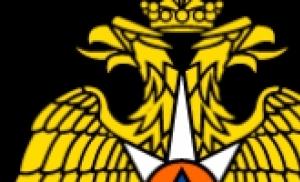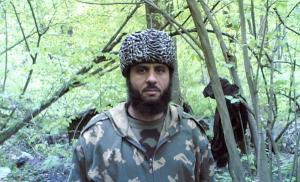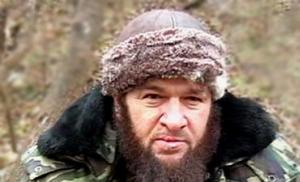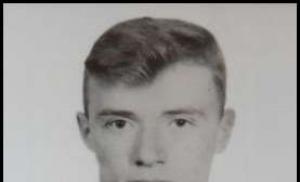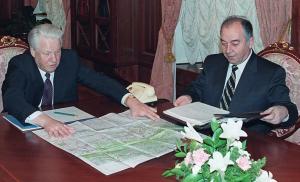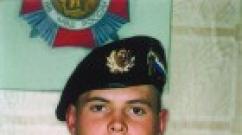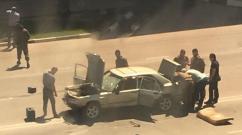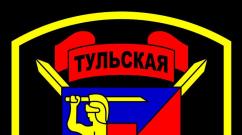The war in Chechnya is a black page in the history of Russia. War in Chechnya: history, beginning and results Withdrawal of troops from Chechnya 1996
The article tells briefly about the first Chechen war (1994-1996), which was waged by Russia on the territory of Chechnya. The conflict led to heavy losses among the Russian military, as well as among the peaceful Chechen population.
- The course of the first Chechen war
- The results of the first Chechen war
Causes of the first Chechen war
- As a result of the events of 1991 and the secession of the republics from the USSR, similar processes began in the Chechen-Ingush Autonomous Soviet Socialist Republic. The nationalist movement in the republic was headed by the former Soviet general D. Dudayev. In 1991, he proclaimed the creation of the independent Chechen Republic of Ichkeria (ChRI). A coup d'état took place, as a result of which representatives of the former government were overthrown. The main government offices were seized by the nationalists. B. Yeltsin's introduction of a state of emergency in the republic could no longer change anything. The withdrawal of Russian troops begins.
CRI was an unrecognized republic not only in Russia, but throughout the world. Power relied on military force and criminal structures. The sources of income for the new government were the slave trade, robberies, drug trafficking and oil from the Russian pipeline passing through the territory of Chechnya. - In 1993, D. Dudayev carried out another coup d'etat, dispersing the parliament and the constitutional court. The constitution adopted after this approved the regime of D. Dudayev's personal power.
On the territory of CRI, opposition to the government arises in the form of the Provisional Council of the Chechen Republic. The Council enjoys the support of the Russian government, it receives material assistance, and employees of Russian special forces are sent to support it. There are military clashes between Dudayev's detachments and representatives of the opposition.
The course of the first Chechen war
- Even before the official declaration of hostilities in early December 1991, Russian aviation inflicted a massive strike on Chechen airfields, destroying all enemy aircraft. B. Yeltsin signs a decree on the start of hostilities. The Russian army begins an invasion of Chechnya. During the first weeks, all the northern Chechen regions passed under the control of Russia, Grozny was practically surrounded.
- From the end of December 1994 to March 1995. stormed Grozny. Despite the significant superiority in numbers and weapons, the Russian army suffered heavy losses, and the assault took a long time. In the conditions of street fighting, the heavy equipment of the Russian army did not pose a serious threat, the militants easily destroyed tanks with grenade launchers. The soldiers in the mass were untrained, there were no maps of the city, there was no established communication between the units. Already during the assault, the Russian command changes tactics. With the support of artillery and aviation, the offensive is carried out by small air assault groups. The widespread use of artillery and bombardment is turning Grozny into ruins. In March, the last detachments of militants leave it. Pro-Russian authorities are being created in the city.
- After a series of battles, the Russian army captures key districts and cities of Chechnya. However, retreating in time, the militants do not suffer serious losses. The war takes on a guerrilla character. The militants carry out terrorist attacks and surprise attacks on the positions of the Russian army throughout Chechnya. In response, airstrikes are launched, during which civilians often die. This causes hatred for the Russian forces, the population provides assistance to the militants. The situation was aggravated by the terrorist acts in Budyonnovsk (1995) and Kizlyar (1996), during which many civilians and soldiers were killed, and the militants suffered practically no losses.
- In April 1996, D. Dudayev was killed as a result of an air strike, but this no longer affected the course of the war.
- On the eve of the presidential elections, B. Yeltsin, for political purposes, decided to agree to a truce in an unpopular war among the people. In June 1996, an agreement was signed on a truce, the disarmament of the separatists and the withdrawal of Russian troops, but neither side fulfilled the terms of the agreement.
- Immediately after winning the election, B. Yeltsin announces the resumption of hostilities. In August, the militants stormed Grozny. Despite superior forces, Russian troops were unable to hold the city. The separatists captured a number of other settlements.
- The fall of Grozny led to the signing of the Khasavyurt agreements. The Russian army was withdrawn from Chechnya, the question of the republic's status was put off for five years.
The results of the first Chechen war
- The Chechen war was supposed to put an end to illegal power on the territory of the republic. In general, successful military operations at the first stage of the war, the capture of Grozny did not lead to victory. Moreover, significant losses among the Russian troops made the war extremely unpopular in Russia. The widespread use of aviation and artillery was accompanied by casualties among the civilian population, as a result of which the war acquired a protracted, partisan character. Russian troops held only large centers and were constantly attacked.
- The goal of the war was not achieved. After the withdrawal of Russian troops, power again fell into the hands of criminal and nationalist groups.
The Chechen war went down in history as one of the largest military operations. This war was a serious test for Russian soldiers. She did not leave indifferent any heart, did not remain without a trace for anyone. The Chechen war was shed not only by the tears of the relatives of the victims, but also by those who sympathized with them. (Annex 3)
The path of the Russian soldiers was long and difficult. A lot of time has passed since those tragic events, but the memory lives in the heart of everyone and the pain of loss reverberates in the heart.
The further the years of the Chechen war go down in history, the brighter and more fully the majesty of the exploits of Soviet and Russian soldiers is manifested. They proved that unity and faith in victory defeat injustice and impunity. From the time when these bloody wars passed, the objective and indisputable fact - Victory - has become even more visible and distinct. A victory that has been achieved at great cost and which cannot be measured by existing metric measures. Here the measurement is unconventional - human lives. Millions of dead, dead of wounds, missing and burned in the fire of war. They died, died from wounds and diseases, went missing, perished in captivity ... - such concepts are an indispensable companion of military casualty statistics.
The Chechen war is a large-scale military action between the federal troops of the Russian Federation and Chechen armed formations.
Russia's attempts to peacefully resolve the protracted Chechen crisis that arose after Chechnya declared independence in 1991 and seceded from Russia were unsuccessful.
The assault on Grozny by the anti-Dudaev opposition, supported by the federal center in order to overthrow the regime of D.M. Dudayev, ended in failure. On November 30, 1994, President Yeltsin signed a decree "On measures to restore constitutionality and law and order on the territory of the Chechen Republic." It was decided to use the regular army. The generals intended to easily capture the rebellious republic, however, the war dragged on for several years.
December 11, 1994 Russian troops crossed the border of Chechnya, bloody battles began for Grozny. Only by March 1995 did Russian troops succeed in ousting the Chechen militias from it. The Russian army, using aviation, artillery, armored vehicles, gradually expanded the radius of its control, the position of the Chechen formations, which switched to the tactics of guerrilla warfare, worsened every day.
In June 1995, a detachment of militants under the command of Sh. Basayev raided the city of Budyonnovsk and took hostage everyone who was in the city hospital and other residents of the city. In order to save the lives of the hostages, the Russian government complied with all the demands of the militants and agreed to start peace negotiations with Dudayev's representatives. But the complex negotiation process was disrupted in October 1995 as a result of an assassination attempt on the commander of the Russian troops, General A.S. Romanova. The hostilities continued. The war revealed the insufficient combat capability of the Russian army and required more and more budgetary investments. In the eyes of the world community, Russia's authority was falling. After the failure of the operation of the federal troops in January 1996 to neutralize the militants of S. Raduev in Kizlyar and Pervomaisky in Russia itself, demands to stop hostilities intensified. The pro-Moscow authorities in Chechnya failed to win the trust of the population and were forced to seek protection from the federal authorities.
The death of Dudayev in April 1996 did not change the situation. In August 1996, Chechen formations actually captured Grozny. Under these conditions, Yeltsin decided to hold peace talks, which he instructed the Secretary of the Security Council A.I. Lebed.
On August 30, 1996, peace agreements were signed in Khasavyurt, which provided for the complete withdrawal of Russian troops from the territory of Chechnya, the holding of general democratic elections, the decision on the status of Chechnya was postponed for five years.
After the end of the first Chechen campaign of 1994-1996, the fate of more than 1,200 Russian servicemen remained unknown.
Chechnya, 1999 War resumed
In 1999, the Chechen war resumed after Chechen fighters invaded Dagestan, attempted to seize the highlands and proclaim the establishment of an Islamic state. Federal troops again entered Chechnya and in a short time took control of the most important settlements.
At the referendum, the inhabitants of Chechnya voted for the preservation of the republic as part of the Russian Federation.
The war in Chechnya was the largest military clash since the Second World War and claimed the lives of tens of thousands of people. This war was a serious warning to the authorities about the dire consequences of civil conflict.
In total, according to official data, about 6,000 Russian servicemen, border guards, police officers and security service personnel died or went missing in Chechnya during the entire conflict. Today we do not have any summary data on the irretrievable losses of the Chechen army. One can only assume that due to the smaller number and higher level of combat training, the Chechen troops suffered significantly fewer losses than the federal troops. The total number of dead residents of Chechnya is most often estimated at 70,000-80,000 people, the overwhelming majority being civilians. They became victims of shelling and bombing by the federal troops, as well as the so-called "cleansing operations" - inspection by Russian soldiers and employees of the Ministry of Internal Affairs of the cities and villages left by the Chechen formations, when civilians often died from bullets and grenades of the federals. The bloodiest "mopping-up operations" were carried out in the village of Samashki near the border with Ingushetia.
Cause of the war
How did this war actually start, which turned the lives of the people of the two peoples upside down? There were several reasons for its inception. First, Chechnya was not allowed to secede. Secondly, the oppression of the Caucasian peoples has been going on since ancient times, that is, the roots of this conflict go very far. First they humiliated the Chechens, and then they - the Russians. In Chechnya, after the start of the conflict, the life of Russians could be compared to hell.
Did this war affect the fate of those guys who participated in it? It definitely influenced, but in different ways: it took someone's life, others had the opportunity to live fully, someone, on the contrary, could become a man with a capital letter. The surviving guys, from what they saw and experienced, sometimes went crazy. Some of them committed suicide, perhaps because they felt guilty before those who were gone. Their destinies developed differently, some are happy and found themselves in life, others are vice versa. Of course, to a greater extent, war cannot positively affect the future fate of a person, it can only teach you to appreciate life and everything that is in it.
The first Chechen war (1994-1996): briefly about the main events
25 years ago, on December 11, 1994, the First Chechen War began. In the reference, the "Caucasian Knot" briefly recalls the main milestones of this bloody and destructive conflict.

On May 27-28, 1996, at the talks in Moscow, the parties managed to agree on a ceasefire. On May 28, while the Ichkerian delegation was still in Moscow, Boris Yeltsin made a blitz visit to Chechnya, where he congratulated the Russian servicemen on their victory in the war. However, after Yeltsin was re-elected president (July 3), the new Secretary of the Security Council, Alexander Lebed, announced the resumption of hostilities in Chechnya.
On August 6, 1996, separatist forces under the command of the Chief of the General Staff of Ichkeria Aslan Maskhadov captured Grozny, Gudermes and Argun (Operation Jihad). On August 20, General Pulikovsky delivered an ultimatum to the Chechen side, demanding that they leave the capital of the republic and lay down their arms within 48 hours, promising otherwise to strike at the city. The shelling, however, began on the night of 20 August. By August 22, Alexander Lebed managed to achieve a ceasefire and the disengagement of the warring parties in Grozny.
The first Chechen war 1994-1996: briefly about the causes, events and results. The Chechen wars claimed many lives.
But what caused the conflict in the first place? What happened in those years in the restless southern regions?
Causes of the Chechen conflict
 After the collapse of the USSR, General Dudayev came to power in Chechnya. In his hands were large stocks of weapons and property of the Soviet state.
After the collapse of the USSR, General Dudayev came to power in Chechnya. In his hands were large stocks of weapons and property of the Soviet state.
The main goal of the general was the creation of an independent republic of Ichkeria. The means that were used to achieve this goal were not entirely loyal.
The regime established by Dudayev was declared illegal by the federal authorities. Therefore, they considered it their duty to intervene. The struggle for spheres of influence became the main cause of the conflict.
Other reasons coming from the main:
- Chechnya's desire to secede from Russia;
- Dudayev's desire to create a separate Islamic state;
- dissatisfaction of the Chechens with the invasion of Russian troops;
- the source of income for the new government was the slave trade, drug trafficking and oil from the Russian pipeline passing through Chechnya.
The government sought to regain power over the Caucasus and regain lost control.
Chronicle of the first Chechen war
 The first Chechen campaign began on December 11, 1994. It lasted almost 2 years.
The first Chechen campaign began on December 11, 1994. It lasted almost 2 years.
It was a confrontation between federal troops and the forces of an unrecognized state.
- December 11, 1994 - the entry of Russian troops. The Russian army advanced from 3 sides. One of the groupings approached the settlements not far from Grozny the very next day.
- December 31, 1994 - assault on Grozny. The fighting began a few hours before the New Year. But at first luck was not on the side of the Russians. The first assault failed. There were many reasons: the poor preparedness of the Russian army, lack of coordination, lack of coordination, the presence of old maps and photographs of the city. But attempts to take the city continued. Grozny came under full Russian control only on March 6th.
- Events from April 1995 to 1996 After the capture of Grozny, it was gradually possible to establish control over most of the flat territories. In mid-June 1995, a decision was made to postpone hostilities. However, it has been violated many times. At the end of 1995, elections were held in Chechnya, which were won by a protege from Moscow. In 1996 the Chechens attempted to attack Grozny. All attacks were repelled.
- April 21, 1996 - death of separatist leader Dudayev.
- On June 1, 1996, a truce was declared. According to the terms, exchanges of prisoners were to take place, the disarmament of the militants and the withdrawal of Russian troops. But no one wanted to give in, and the fighting began again.
- August 1996 - the Chechen operation "Jihad", during which the Chechens took Grozny and other significant cities. The Russian authorities decide on the conclusion of a truce and the withdrawal of troops. The first Chechen war ended on August 31, 1996.
Consequences of the first Chechen campaign
 Brief results of the war:
Brief results of the war:
- Following the results of the first Chechen war, Chechnya remained independent, but no one still recognized it as a separate state.
- Many cities and settlements were destroyed.
- A significant place began to take the receipt of income by criminal means.
- Almost all civilians left their homes.
There was also an increase in Wahhabism.
Table "Losses in the Chechen war"
The exact number of casualties in the first Chechen war cannot be named. Opinions, assumptions and calculations are different.
Approximate losses of the parties look like this:
In the column "Federal Forces" the first figure is the calculations immediately after the war, the second is the data contained in the book on the wars of the 20th century, published in 2001.
Heroes of Russia in the Chechen war
 According to official figures, 175 soldiers who fought in Chechnya received the title of Hero of Russia.
According to official figures, 175 soldiers who fought in Chechnya received the title of Hero of Russia.
Most military personnel who participated in the hostilities received the title posthumously.
The most famous heroes of the first Russian-Chechen war and their exploits:
- Victor Ponomarev. During the fighting in Grozny, he covered the sergeant with himself, which saved his life.
- Igor Akhpashev. In Grozny, he neutralized the main firing points of the Chechen cutthroats on a tank. Then he was surrounded. The militants blew up the tank, but Akhpashev fought in the burning car to the last. Then there was a detonation and the hero died.
- Andrey Dneprovskiy. In the spring of 1995, the Dneprovsky unit defeated the Chechen fighters who were on the heights in the fortification. Andrei Dneprovsky was the only one who died in the ensuing battle. All other soldiers of this unit survived all the horrors of the war and returned home.
Federal troops did not achieve the goals set in the first war. This was one of the reasons for the second Chechen war.
War veterans believe that the first war could have been avoided. Opinions about which side unleashed the war differ. Is it true that there was a possibility of a peaceful settlement of the situation? Here the assumptions are also different.
Many wars are written in the history of Russia. Most of them were liberation, some began on our territory, and ended far beyond its borders. But there is nothing worse than such wars, which were started as a result of the illiterate actions of the country's leadership and led to horrific results because the authorities solved their own problems, not paying attention to people.
One of such sad pages of Russian history is the Chechen war. It was not a confrontation between two different peoples. There were no absolute rightists in this war. And the most surprising thing is that this war still cannot be considered completed.
Prerequisites for the start of the war in Chechnya
It is hardly possible to talk about these military campaigns briefly. The era of perestroika, so pathetically announced by Mikhail Gorbachev, marked the collapse of a vast country consisting of 15 republics. However, the main difficulty for Russia also lay in the fact that, left without satellites, it faced internal unrest that had a nationalist character. The Caucasus turned out to be especially problematic in this respect.
Back in 1990, the National Congress was created. This organization was headed by Dzhokhar Dudayev, a former Major General of Aviation in the Soviet Army. The Congress set as its main goal - secession from the USSR, in the future it was supposed to create the Chechen Republic, independent of any state.
In the summer of 1991, a situation of dual power developed in Chechnya, since both the leadership of the Chechen-Ingush Autonomous Soviet Socialist Republic itself and the leadership of the so-called Chechen Republic of Ichkeria, proclaimed by Dudayev, acted.
Such a state of affairs could not exist for a long time, and the same Dzhokhar and his supporters in September seized the republican television center, the Supreme Council and the Radio House. This was the beginning of the revolution. The situation was extremely shaky, and its development was facilitated by the official collapse of the country, carried out by Yeltsin. After the news that the Soviet Union no longer existed, Dudayev's supporters announced that Chechnya was seceding from Russia.
The separatists seized power - under their influence, parliamentary and presidential elections were held in the republic on October 27, as a result of which power was completely in the hands of the ex-general Dudayev. A few days later, on November 7, Boris Yeltsin signed a decree stating that a state of emergency was being introduced in the Chechen-Ingush Republic. In fact, this document became one of the reasons for the start of the bloody Chechen wars.
At that time, there were quite a lot of ammunition and weapons in the republic. Some of these stocks have already been seized by the separatists. Instead of blocking the situation, the leadership of the Russian Federation allowed it to get out of control even more - in 1992, the head of the Ministry of Defense, Grachev, handed over half of all these stocks to the militants. The authorities explained this decision by the fact that it was no longer possible to withdraw weapons from the republic at that time.
However, during this period there was still an opportunity to stop the conflict. An opposition was created that opposed the power of Dudayev. However, after it became clear that these small detachments could not resist the militant formations, the war was practically on.
Yeltsin and his political supporters could no longer do anything, and from 1991 to 1994 it was actually a republic independent of Russia. Here were formed their own authorities, had its own state symbols. In 1994, when Russian troops were brought into the territory of the republic, a full-scale war began. Even after the resistance of Dudayev's militants was suppressed, the problem was not finally resolved.
Speaking about the war in Chechnya, it should be borne in mind that the illiterate leadership, first of the USSR, and then Russia, was to blame for its unleashing, first of all. It was the weakening of the internal political situation in the country that led to the loosening of the border regions and the strengthening of nationalist elements.
As for the essence of the Chechen war, here there is a conflict of interests and the inability to govern a vast territory on the part of first Gorbachev and then Yeltsin. In the future, this tangled knot had to be untied by people who came to power at the very end of the 20th century.
First Chechen War 1994-1996
Historians, writers and filmmakers are still trying to assess the scale of the horrors of the Chechen war. No one denies that it caused enormous damage not only to the republic itself, but to the whole of Russia. However, it should be borne in mind that the two campaigns were quite different in nature.
During the Yeltsin era, when the first Chechen campaign of 1994-1996 was unleashed, Russian troops could not act in a sufficiently coordinated and free manner. The country's leadership solved its problems, moreover, according to some reports, many profited from this war - there were deliveries of weapons to the territory of the republic from the Russian Federation, and the militants often earned by demanding large ransoms for the hostages.
At the same time, the main task of the Second Chechen War of 1999-2009 was the suppression of gangs and the establishment of constitutional order. It is clear that if the goals of both campaigns were different, then the course of action differed significantly.
On December 1, 1994, air strikes were carried out on airfields located in Khankala and Kalinovskaya. And already on December 11, Russian units were introduced into the territory of the republic. This fact marked the beginning of the First Campaign. The entrance was carried out immediately from three directions - through Mozdok, through Ingushetia and through Dagestan.
By the way, at that time Eduard Vorobyov led the Ground Forces, but he immediately resigned, considering it unreasonable to lead the operation, since the troops were completely unprepared for full-scale military operations.
At first, Russian troops advanced quite successfully. The entire northern territory was occupied by them quickly and without much loss. From December 1994 to March 1995, the Russian Armed Forces stormed Grozny. The city was built up quite densely, and Russian units were simply stuck in skirmishes and attempts to take the capital.
The Minister of Defense of the Russian Federation Grachev expected to take the city very quickly and therefore spared no human and technical resources. According to researchers, over 1,500 Russian soldiers and many civilians of the republic died or went missing near Grozny. Armored vehicles also suffered serious damage - almost 150 units were out of order.

Nevertheless, after two months of fierce fighting, federal troops still took Grozny. Participants in the hostilities subsequently recalled that the city was destroyed almost to the ground, this is also confirmed by numerous photographs and video documents.
During the assault, not only armored vehicles were used, but also aviation and artillery. There were bloody battles on almost every street. The militants during the operation in Grozny lost more than 7,000 people and, under the leadership of Shamil Basayev, on March 6 were forced to finally leave the city, which came under the control of the Russian Armed Forces.

However, the war, which brought death to thousands of not only armed, but also civilians, did not end there. The fighting continued first on the plains (from March to April), and then in the mountainous regions of the republic (from May to June 1995). Argun, Shali, Gudermes were taken successively.
The militants responded with terrorist acts carried out in Budyonnovsk and Kizlyar. After varying successes on both sides, a decision was made to negotiate. And as a result, on August 31, 1996, they were concluded. According to them, the federal troops were leaving Chechnya, the infrastructure of the republic was to be restored, and the question of an independent status was postponed.
Second Chechen campaign 1999-2009
If the country's authorities hoped that by reaching an agreement with the militants, they would solve the problem and the battles of the Chechen war were a thing of the past, then everything turned out to be wrong. For several years of a dubious truce, gangs have only accumulated strength. In addition, more and more Islamists from Arab countries penetrated the territory of the republic.
As a result, on August 7, 1999, the militants of Khattab and Basayev invaded Dagestan. Their calculation was based on the fact that the Russian government at that time looked very weak. Yeltsin practically did not lead the country, the Russian economy was in deep decline. The militants hoped that they would take their side, but they put up serious resistance to gangster groups.
The unwillingness to let the Islamists into their territory and the help of the federal troops forced the Islamists to retreat. True, it took a month for this - the militants were knocked out only in September 1999. At that time, Aslan Maskhadov was in charge of Chechnya, and, unfortunately, he was not capable of exercising full control over the republic.
It was at this time, angry that they failed to break Dagestan, Islamist groups began to carry out terrorist acts on the territory of Russia. Terrible terrorist acts were committed in Volgodonsk, Moscow and Buynaksk, which claimed dozens of lives. Therefore, among those killed in the Chechen war, it is necessary to include those civilians who did not think that it would come to their families.
In September 1999, Yeltsin signed a decree "On Measures to Increase the Efficiency of Counter-Terrorist Operations in the North Caucasus Region of the Russian Federation". And on December 31, he announced his resignation from the presidency.
As a result of the presidential elections, power in the country passed to a new leader - Vladimir Putin, whose tactical abilities the militants did not take into account. But at that time, Russian troops were already on the territory of Chechnya, they again bombed Grozny and acted much more competently. The experience of the previous campaign was taken into account.
December 1999 is another of the painful and terrible pages of the war. The Argun Gorge, otherwise called the “Wolf Gates”, is one of the largest Caucasian gorges in terms of length. Here, the landing and border troops carried out the special operation "Argun", the purpose of which was to recapture a section of the Russian-Georgian border from Khattab's troops, and also to deprive the militants of the way to supply weapons from the Pankisi Gorge. The operation was completed in February 2000.
Many also remember the feat of the 6th company of the 104th parachute regiment of the Pskov Airborne Division. These fighters became real heroes of the Chechen war. They withstood a terrible battle at the 776th height, when they, in the amount of only 90 people, managed to hold back over 2,000 militants during the day. Most of the paratroopers died, and the militants themselves lost almost a quarter of their composition.
Despite such cases, the second war, unlike the first, can be called sluggish. Perhaps that is why it lasted longer - during the years of these battles, a lot of things happened. The new Russian authorities decided to act differently. They refused to conduct active hostilities conducted by the federal troops. It was decided to use the internal split in Chechnya itself. So, Mufti Akhmat Kadyrov went over to the side of the federals, and situations were increasingly observed when ordinary militants laid down their arms.
Putin, realizing that such a war could go on indefinitely, decided to use internal political hesitation and persuade the authorities to cooperate. Now we can already say that he succeeded. The fact that on May 9, 2004, the Islamists carried out a terrorist attack in Grozny, aimed at intimidating the population, also played a role. The explosion thundered at the Dynamo stadium during a concert dedicated to the Victory Day. More than 50 people were wounded, and Akhmat Kadyrov died from his wounds.
This odious act of terrorism brought quite different results. The population of the republic was finally disappointed in the militants and rallied around the legitimate government. A young man was appointed in place of his father, who understood the futility of Islamist resistance. Thus, the situation began to change for the better. If the militants relied on attracting foreign mercenaries from abroad, then the Kremlin decided to use national interests. The inhabitants of Chechnya were very tired of the war, so they voluntarily went over to the side of the pro-Russian forces.
The counter-terrorist operation regime introduced by Yeltsin on September 23, 1999 was canceled by President Dmitry Medvedev in 2009. Thus, the campaign was officially ended, since it was called not a war, but a CTO. However, is it possible to assume that the veterans of the Chechen war can sleep peacefully if there are still local battles and terrorist acts from time to time?
Results and consequences for the history of Russia
It is unlikely that anyone today can specifically answer the question of how many people died in the Chechen war. The problem is that any calculations will only be approximate. During the escalation of the conflict before the First Campaign, many people of Slavic origin were repressed or forced to leave the republic. During the years of the First Campaign, many fighters from both sides died, and these losses also cannot be accurately calculated.
If military losses can still be more or less calculated, then no one has been involved in clarifying the losses on the part of the civilian population, except perhaps human rights activists. Thus, according to the current official data, the 1st war claimed the following number of lives:
- Russian soldiers - 14,000 people;
- militants - 3,800 people;
- civilian population - from 30,000 to 40,000 people.
If we talk about the Second Campaign, then the results of the death toll are as follows:
- federal troops - about 3,000 people;
- militants - from 13,000 to 15,000 people;
- civilian population - 1000 people.
It should be borne in mind that these figures vary greatly depending on which organizations provide them. For example, when discussing the results of the second Chechen war, official Russian sources speak of a thousand dead among the civilian population. At the same time, Amnesty International (a non-governmental organization of international level) gives completely different figures - about 25,000 people. The difference in these data, as you can see, is huge.
The result of the war can be called not only impressive numbers of losses among the dead, wounded, missing people. It is also a ruined republic - after all, many cities, primarily Grozny, were subjected to artillery shelling and bombing. The entire infrastructure was practically destroyed in them, so Russia had to rebuild the capital of the republic from scratch.
As a result, today Grozny is one of the most beautiful and modern. Other settlements of the republic were also rebuilt.

Anyone who is interested in this information can find out what happened on the territory between 1994 and 2009. There are many films about the Chechen war, books and various materials on the Internet.
However, those who were forced to leave the republic, lost their relatives, their health - these people are unlikely to want to immerse themselves in what they have already experienced. The country was able to withstand this most difficult period of its history, and once again proved what is more important for them - dubious calls for independence or unity with Russia.
The history of the Chechen war has not yet been fully studied. Researchers will look for documents on losses among the military and civilians for a long time, double-check the statistical data. But today we can say: the weakening of the leaders and the desire for disunity always lead to terrible consequences. Only the strengthening of state power and the unity of people can end any confrontation so that the country can again live in peace.
